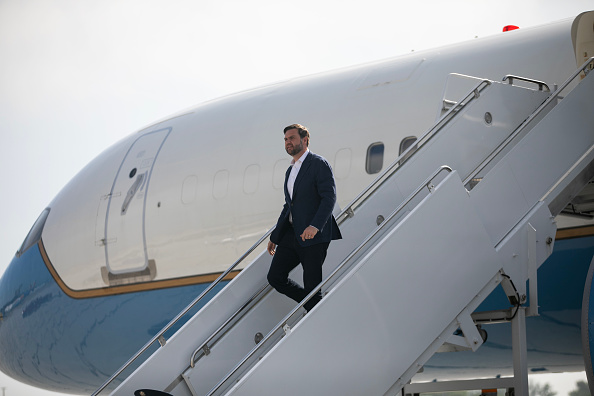In a new development, Israel’s public broadcaster reported on Monday evening that US Vice President J.D. Vance will not enter the Gaza Strip during his upcoming visit to Israel due to security concerns.
Change in Itinerary Amid Tense Situation
Earlier reports had indicated that Vance would arrive in Tel Aviv on Tuesday and planned to enter Gaza to assess the progress of the ceasefire agreement.
However, updated reports confirmed that Vance will monitor developments remotely, instead of visiting the enclave in person.
According to Israel’s official broadcaster, Vance will follow the situation “through special screens” at the Ministry of Defense headquarters (Kirya) in Tel Aviv.
Similarly, Israel Hayom newspaper stated that US Vice President J.D. Vance would observe the situation in Gaza via drone footage, emphasizing that security risks had made a physical visit impossible.
Coordination Between US and Israeli Forces
Vance’s visit follows last week’s trip to Gaza by Steve Witkoff and Jared Kushner, special envoys of President Donald Trump.
The two had returned to Israel earlier today, ahead of Vance’s arrival, to discuss the second phase of Trump’s peace plan for Gaza.
This next stage reportedly includes the deployment of an international peacekeeping force, the withdrawal of Israeli troops, and the disarmament of Hamas.
The plan aims to ensure long-term stability and pave the way for reconstruction efforts in the war-torn enclave.

What is the First Destination of US Vice President J.D. Vance?
Upon arrival at Ben Gurion Airport, US Vice President J.D. Vance is expected to head to the joint U.S.-Israeli military command center in Kiryat Gat, southern Israel.
Established under Trump’s ceasefire implementation plan, the facility hosts hundreds of American and Israeli officers who coordinate post-war activities.
According to Channel Kan, these teams are developing operational mechanisms to handle potential ceasefire violations, monitor reports from inside Gaza, and set up frameworks to prevent friction with foreign peacekeeping forces expected to deploy in the area soon.
Their duties also include monitoring reconstruction progress and ensuring compliance with the terms of the ceasefire.
Ceasefire Implementation and Humanitarian Context
The ceasefire agreement, implemented on October 10, is part of Trump’s broader initiative to end the war in Gaza.
It outlines a gradual Israeli withdrawal, a mutual prisoner exchange, and the immediate entry of humanitarian aid into the Strip.
The agreement brought an end to a two-year Israeli military campaign that resulted in catastrophic human losses and destruction.
Causalities of Gaza War
According to official figures, more than 68,000 Palestinians were killed and over 170,000 were injured, while nearly 90% of Gaza’s civilian infrastructure was destroyed.
US Vice President J.D. Vance decision not to enter Gaza highlights the fragile security conditions on the ground, even amid efforts to stabilize the situation.
His visit, alongside the renewed US engagement in post-war planning, signals Washington’s ongoing commitment to overseeing peace and reconstruction efforts in Gaza and ensuring the ceasefire endures.


